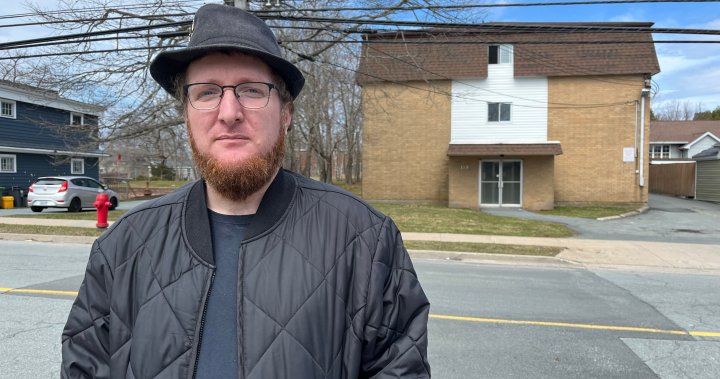There are calls to improve tenant safety in Halifax after firefighters responded to two carbon monoxide leaks in apartment buildings over the past few days.
In both cases, the leaks were only revealed after a tenant went to the emergency room with symptoms of poisoning and later tested positive for high levels of carbon monoxide.
Sunday morning’s incident involved an 18-unit apartment building on Albro Lake Road in Dartmouth.
A resident, who didn’t want to share their name, told Global News tenants were awoken by firefighters banging on the doors.
Firefighters discovered carbon monoxide levels of 400 parts per million, which is 16 times the safe amount for humans. The source of the leak was determined to be the building’s heating system.
“As many as four more patients were affected quite seriously by the carbon monoxide,” said district fire Chief Robert Hebb.
The property managers did not respond to Global News’ request for comment.
Hebb says a second similar incident happened Monday when a resident of an apartment building in the municipality tested positive for CO poisoning in hospital.
Get daily National news
Get the day’s top news, political, economic, and current affairs headlines, delivered to your inbox once a day.
Symptoms of CO poisoning can include headache, dizziness, nausea, vomiting and loss of consciousness. Depending on the amount and length of exposure, CO poisoning can cause permanent brain damage or death.
Sources of carbon monoxide in a home could include stoves, fireplaces, natural gas or oil furnaces, propane appliances — such as stoves and heaters — and idling vehicles in an attached garage.
“I think the biggest challenge is lack of awareness. Not everybody’s aware of what causes carbon monoxide in a space, nor are they aware of what to do and how to recognize the symptoms,” Hebb says.
Hebb stresses the importance of having working carbon monoxide detectors and alarms in residences.
According to Halifax Fire, carbon monoxide alarms should be located on each level of the home, including the basement. Its website says “special consideration” should be given to doorways leading to sleeping locations, attached garages and furnace rooms. It also advises that if there is only one detector in the home, it should be placed near the sleeping area to make sure the alarm is loud enough to wake people up.
“If you don’t have a carbon monoxide detector, they’re relatively inexpensive,” says Hebb.
“These detectors are important because carbon monoxide is colourless, odourless and tasteless, so early detection and early warnings are the most effective way to make sure people aren’t affected by carbon monoxide in the building.”
Despite the fact that there are bylaws in place requiring landlords to install and maintain the detectors, they are not listed in the Nova Scotia building code.
For tenant advocates like Jonethan Brigley, incidents like Sunday’s speak to a greater issue.
“We’re currently relying on landlords to agree to these laws, but expect them to uphold it, with no enforcement,” he said.
“(Even) inspectors will state that we can tell a landlord to fix things to bring up to code, but they can’t hold them accountable because nothing happens after that point.”
Brigley says a provincial enforcement unit that can ensure buildings are complying with city bylaws is the only way to avoid future close calls.
“This will not only add jobs to the pool but allow the city and the province to stop reeling back the issues that’s been happening between tenants and landlords and put everyone on an equal playing field,” he said.
© 2025 Global News, a division of Corus Entertainment Inc.
Calls to improve tenant safety in Halifax after carbon monoxide leaks


